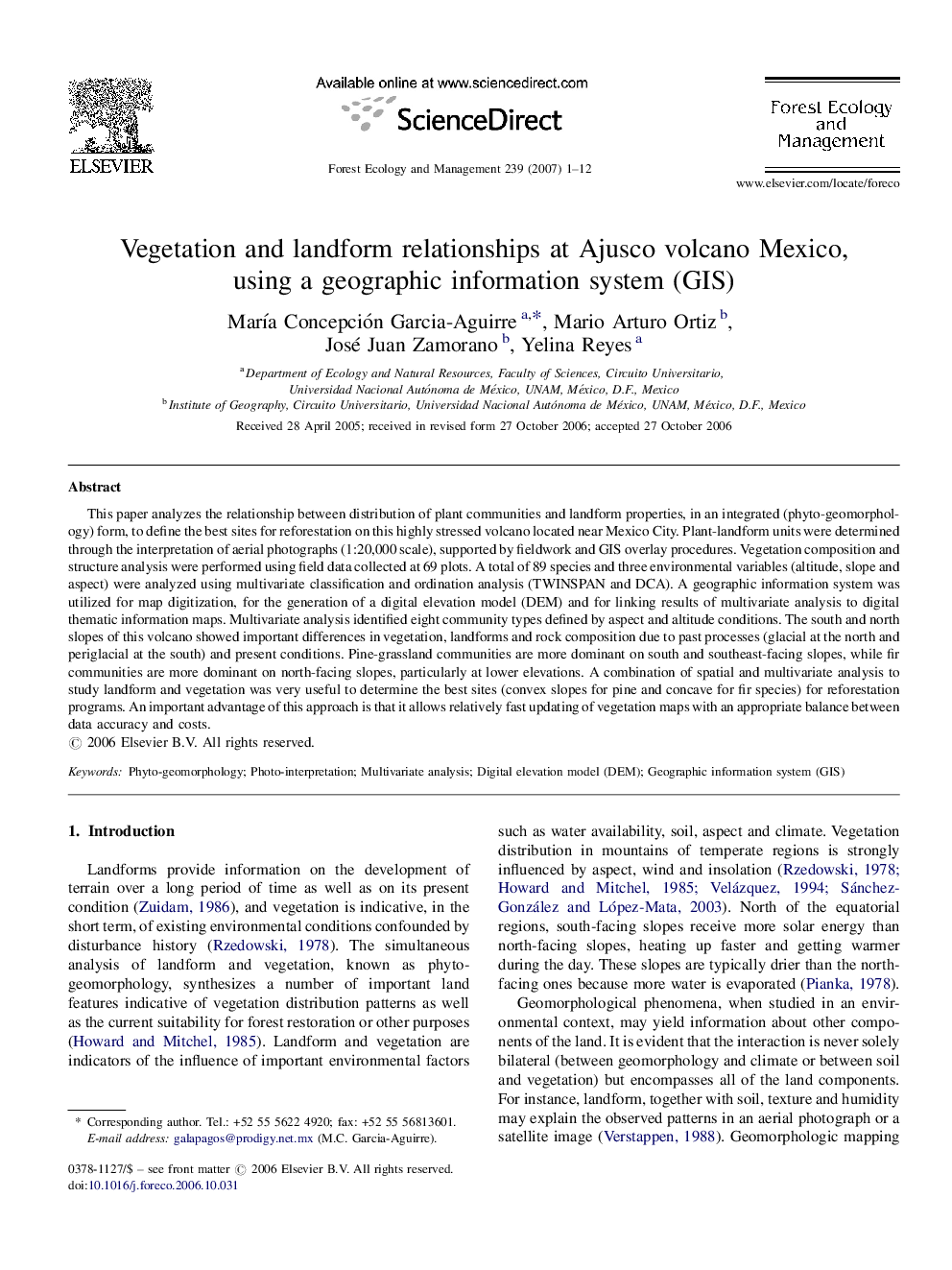| Article ID | Journal | Published Year | Pages | File Type |
|---|---|---|---|---|
| 89791 | Forest Ecology and Management | 2007 | 12 Pages |
This paper analyzes the relationship between distribution of plant communities and landform properties, in an integrated (phyto-geomorphology) form, to define the best sites for reforestation on this highly stressed volcano located near Mexico City. Plant-landform units were determined through the interpretation of aerial photographs (1:20,000 scale), supported by fieldwork and GIS overlay procedures. Vegetation composition and structure analysis were performed using field data collected at 69 plots. A total of 89 species and three environmental variables (altitude, slope and aspect) were analyzed using multivariate classification and ordination analysis (TWINSPAN and DCA). A geographic information system was utilized for map digitization, for the generation of a digital elevation model (DEM) and for linking results of multivariate analysis to digital thematic information maps. Multivariate analysis identified eight community types defined by aspect and altitude conditions. The south and north slopes of this volcano showed important differences in vegetation, landforms and rock composition due to past processes (glacial at the north and periglacial at the south) and present conditions. Pine-grassland communities are more dominant on south and southeast-facing slopes, while fir communities are more dominant on north-facing slopes, particularly at lower elevations. A combination of spatial and multivariate analysis to study landform and vegetation was very useful to determine the best sites (convex slopes for pine and concave for fir species) for reforestation programs. An important advantage of this approach is that it allows relatively fast updating of vegetation maps with an appropriate balance between data accuracy and costs.
